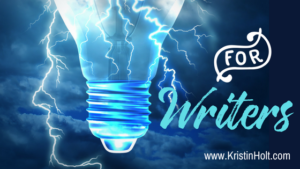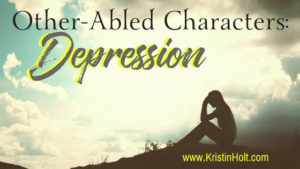My Writing Process, Part 1
My Writing Process, Part 1
.
.
Branding, Software (Scrivener), Ideas are Everywhere, 7-Point Story Structure
.
Beginning
.
Put three writers in a room, ask them how they go about writing a book, and you’ll get three very different answers.
.
Authors are as unique in their methods as in their fingerprints.
.
Beginning writers may study books, attend courses, learn from highly successful authors in one way or another, but eventually–through trial and error–they’ll figure out what works for them. There are no right ways, no magic bullets, no fantastic formulas, just as there are no wrong ways. Just as we all might set out from Atlanta, destination, Chicago–we’ll all get there taking a variety of personally selected routes. We’ll fly. Or drive. Take the interstate or back roads. Some will push through with 16 hour days, while others spend more time visiting stops along the way and arrive much later. Nothing wrong with any of it.
.
Given authors are individual about the process they use to create a book, I want to share my own methods–in case it piques your curiosity.
.
Branding
.
A good brand provides a clear and memorable sense of what your business stands for. ~Unknown
.
My brand is sweet (wholesome) western historical romance. That’s what I write, that’s what I’ll continue to write (at least for a while). I want readers to know what to expect when they pick up another of my books, and I certainly don’t want them to be (unpleasantly) surprised.
.
My Writing Process, Part 1.
.
This means I focus on writing yet another book with the same level of sensuality (very mild), language content (family friendly), era in history, level of humor, and more.
.
I may branch out someday, but to do so now would be counterproductive and I know it.
.
Software
.
When a friend recommended Scrivener to me several years ago, I wondered what it could possibly do that my standard word processor couldn’t. Boy, was I shocked! Happily so. I bought the software immediately and haven’t looked back. ~ Gwen Hernandez
.
While I’m proficient with Microsoft Word, I’ve fallen in love with Scrivener, (so much more than) a word processing program for writers. I use it through every step of the creative process for a number of reasons, including:
- Organization
- Planning My Writing Process, Part 1
- Tracking changes
- Holding onto deleted scenes or outtakes
- Moving scenes around
- Ease in finalizing the file for Kindle or Nook (or any other format)
- Indie Author’s best friend (so easy to drop in images!)
- While it has a steep learning curve (I’m not the only one who thinks so), numerous resources exist
.
Ideas are Everywhere
.
Everybody walks past a thousand story ideas every day. The good writers are the ones who see five or six of them. Most people don’t see any. ~ Orson Scott Card
.
I have a (slightly annoying) habit of asking friends, coworkers, associates how they met their partner. You could say I collect “cute meet” stories. I’m fascinated with the circumstances that unite previously unknown to each other people who end up connecting, falling in love, and committing.
After all, writing about that very miracle is my business.
I’m a romance writer.
Cute Meets are one thing. Workable plots, with adequate conflict to carry a story from beginning to end is a whole ‘nother thing.
Every last one of my plots has worked best while intentionally looking at potential ideas for conflict within the story.
No conflict means no story. My Writing Process, Part 1.
I don’t mind admitting learning this element has been a genuine struggle. No one wants to read about happy characters who fall in love and live happily ever after–unless they surmount huge obstacles in order to find that happiness. Again, no conflict, no story.
My favorite way to look at conflict (what does the character want, and why can’t s/he have it?) is by working diligently through a simple exercise called Seven Point Story Structure.
.
7-Point Story Structure
.
Character is plot, plot is character. ~ F. Scott Fitzgerald
.
I’ve tried a number of things to get, finally, to a place where plotting a book actually works for me and for my beta readers. Thank goodness the majority of those who’ve read my books never saw the anguish in multiple rewrites and finally getting to a place where the story could see the light of day.
Some books have gone through enough serious, gut-wrenching, tear-it-apart-and-start-over rewrites I could’ve completed three books in that same time span. That’s pain, people. Natural childbirth is easy compared to that kind of revision agony.
All that changed when an author-friend introduced me to Dan Wells’s Seven Point Story Structure. Wow. A whole new universe, and it made sense to me from day one. If you’re curious, interested, or have an hour to kill, see Dan Wells’s presentation on this amazing method on YouTube. Find these videos on my For Authors Page.
I’ve created a worksheet that mirrors this method. Because it’s digital, it expands to fit the need. It’s in Word, I save often, and once the 7-Point Structure is complete, I’m ready for a rough draft because I know exactly what needs to happen.
.
Please join me for Part 2 where I share more of my Writing Process: Rough Draft, Second Draft, Beta Readers, Apply Suggestions, Format & Publish, and Independent Publishing.
.
.
Related Articles
Updated April 2022
Copyright © 2015 Kristin Holt LC
My Writing Process, Part 1



























Informative post, Kristin. I especially loved each of the quotes.
Look forward to the next one.
Thanks, Stanalei!